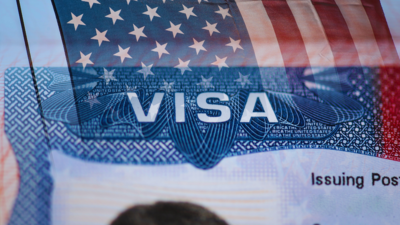ARTICLE AD BOX

US shuts down third-country visa option for Indian students
Indian students aspiring to study in the United States are facing a sharper set of hurdles after the US government enforced stricter visa application rules, rolled back pandemic-era flexibilities, and moved toward regulatory changes that will reshape how international students live and study in America.
Third-country visa applications banned
The US Department of State has barred all non-immigrant visa applicants, including student (F-1), visitor (B1/B2), and work visas (H-1B, O-1), from applying outside their country of citizenship or legal residence. The directive, effective from early September 2025, ends a pandemic-era practice that had allowed Indian applicants to seek appointments in third countries such as Singapore, Thailand, Germany, or Brazil to bypass heavy backlogs at home.The US clarified that exceptions will apply only in limited circumstances where a country has no functioning US visa operations. This means all Indian applicants are now compelled to apply through US consulates in India, where waiting times already range from over three months in Mumbai and Hyderabad to nine months in Chennai.Education consultancies confirm the fallout. Applicants who had booked or started applications abroad must now refile in India, repay fees, and face longer delays.
Industry representatives noted that many Indian students had used third-country applications as a workaround since mid-2025, when securing slots in India became increasingly difficult.
Appointment delays and tighter processing
The appointment crunch in India has worsened since July 2025, when US missions reduced student visa processing capacity while introducing new digital screening protocols. Though extra slots were later added, waiting times remain high.
According to reports from Ahmedabad, approval rates for student visas have fallen below 50 percent, leaving many applicants stranded. Some have been forced to defer admissions or switch destinations altogether.
Interview waivers eliminated
From September 2, the US State Department has also eliminated most non-immigrant visa interview waivers. Children under 14 and seniors over 79, who were previously exempt, must now appear in person for interviews.
Indian students applying for F and M visas are required to attend consular interviews without exception.The end of waivers has further strained appointment schedules at US consulates in India, adding another layer of delay and uncertainty for students trying to align their visa approvals with university start dates.
Proposed duration caps on student visas
Alongside procedural changes, the Department of Homeland Security has proposed ending the long-standing “duration of status” system.
Instead of being allowed to remain in the US for as long as their program requires, students would be issued fixed-term visas capped at four years.Those who need more time, for instance, Ph.D. candidates or students on Optional Practical Training, would have to apply for extensions, with additional fees, paperwork, and biometric checks. The draft rule also includes limits on school transfers, bars second degrees at the same or lower level, and restricts the duration of language training.
Rising scrutiny and consequences
The US Embassy in India has issued repeated warnings to students about strict compliance requirements. Violations such as missing classes, working without authorisation, or failing to maintain full-time enrollment can result in visa revocation, deportation, and permanent bans on future US travel.In Ahmedabad and other centres, students have already reported denials despite confirmed university admissions, and some have been unable to secure interviews altogether.
Those missing the current admission cycle face losing an entire academic year.
What it means for Indian students
For the more than 330,000 Indian students already in the United States, and thousands preparing to travel, the new measures add up to:
- Longer waits for appointments within India.
- Loss of flexibility after the ban on third-country applications.
- Mandatory interviews for nearly all categories of applicants.
- Uncertain academic timelines due to proposed duration limits.
- Higher risks of penalties for any breach of visa rules.
The shift underscores a harder line on student mobility. For Indian families investing heavily in US higher education, the path ahead now comes with mounting costs, uncertainty, and the risk of missed opportunities.



.png)
.png)
.png)
















 4 days ago
6
4 days ago
6








 English (US) ·
English (US) ·